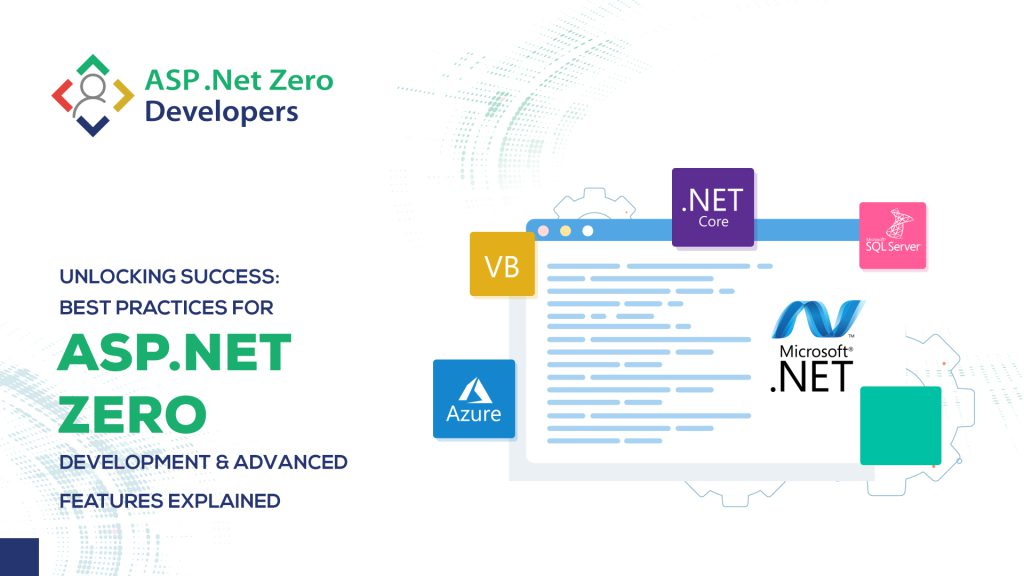Best Practices for ASP.NET Zero:
1. Starting Your ASP.NET Zero Journey:
ASP.NET Zero empowers developers with ASP.NET Core and Angular and changes the development of contemporary online applications and services. Offers pre-built components and tools to streamline the development process.
2. Start Your ASP.NET Zero Project:
Starting an ASP.NET Zero project entails many successive stages. Installing the ASP.NET Zero template, adjusting application settings, and creating database connectivity. Adhering to the guidelines in the official documentation simplifies the setup procedure and creates a conducive atmosphere for development.
3. Accepting Modular Architecture:
ASP.NET Zero promotes modular design by dividing many programs into smaller, more manageable pieces. Design improves the organization of code, encourages reusability, and makes maintenance and scalability easier.
4. Upholding Clean Code Principles
Adhering to coding best practices such as SOLID, DRY, and KISS principles is paramount in ASP.NET Zero projects. Crafting clear, readily understandable code improves cooperation, speeds up mistake detection, and assures code quality.
5. Prioritizing Security Measures
Safeguarding web applications is imperative, and ASP.NET Zero offers robust security features to fortify your projects. ASP.NET Zero improves the security posture of your applications by implementing user authentication, access control, and data encryption, assuring confidentiality and integrity.
6. Ensuring Reliability through Testing
Reliability is associated with ASP.NET Zero applications, and proper testing is critical for achieving peak performance. Employing methodologies like Test-Driven Development (TDD) encompassing unit, integration, and end-to-end testing validates the functionality and resilience of your applications.
7. Optimizing Performance
Efficient performance is pivotal in ASP.NET Zero applications, achieved through code optimization, database management, and implementing caching mechanisms. These optimizations facilitate seamless operation, even under heavy user loads, ensuring a superior user experience.
8. Streamlining Deployment with CI/CD
CI/CD methodologies streamline the development lifecycle, automating tasks like building, testing, and deployment. Leveraging tools like Azure DevOps or GitHub Actions enhances efficiency, reduces errors, and accelerates time-to-market.
9. Vigilant Monitoring and Maintenance
Regular monitoring and maintenance are essential for preserving the health and functionality of ASP.NET Zero applications. Utilizing specialized monitoring tools, proactive issue resolution, and periodic updates mitigate risks and sustain optimal performance.
10. Exploring Advanced Features of ASP.NET Zero.
ASP.NET Zero includes a variety of sophisticated features intended to enhance developers’ skills and improve the user experience.
Conclusion:
ASP.NET Zero is a robust set of tools for building outstanding web applications. It includes cutting-edge features, adheres to industry standards, and focuses on user-centric design, empowering developers to achieve significant accomplishments.

